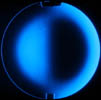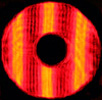November 22,
2013: Not made in the USA All text and images Copyright Michael E. Lockwood, all rights reserved.
I wanted to write this installment as a warning to some.
People would like to buy a cheap telescope, have the mirrors checked
and/or refigured, and then have an optically excellent telescope for
not too much money.
Unfortunately, it appears more and more that the buyer is rolling the dice.
In the past, import telescopes used Pyrex glass. Even though it
was cheap Pyrex, the glass was of decent quality, typically with mild
strain, not severe. Pyrex is more stable during temperature
changes than less expensive plate glass and BK7 glasses, for example.
(Quartz is six times more stable than Pyrex because it expands by
1/6 as much as Pyrex for a given temperature change.)
However, cheaper glasses are now being used in these telescopes, and I
have seen a decline in the quality of the annealing, if they were
annealed at all.
Below are Foucault test and strain test images of a 12" primary mirror that
a client sent me for testing and possible refiguring. There is
also an interferogram for the secondary mirror (flat).
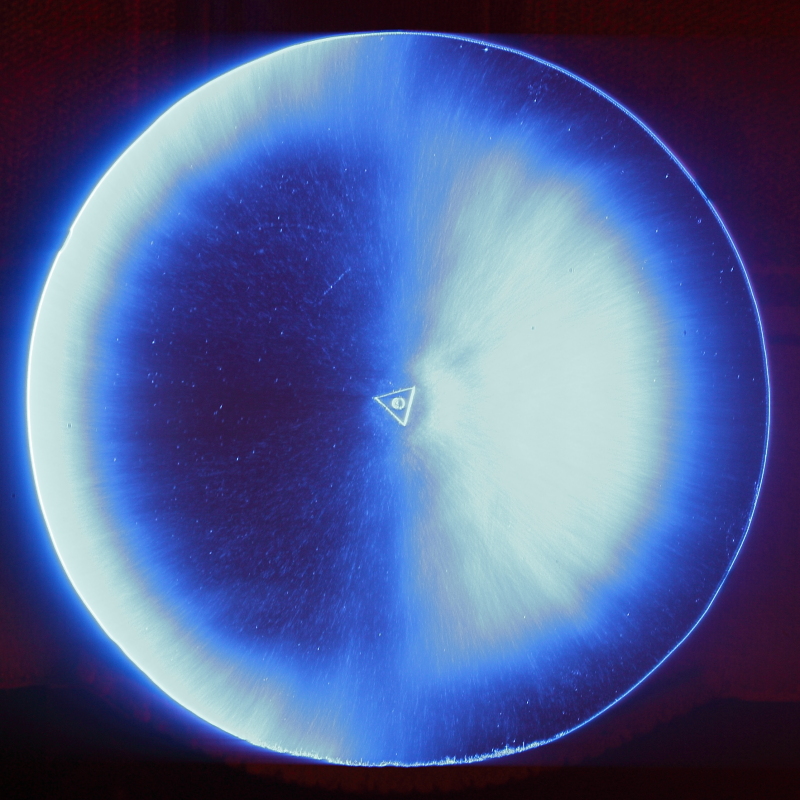
The figure was fairly good, but there is significant roughness on the
surface of the mirror, as seen in the photo of the Foucault test above.
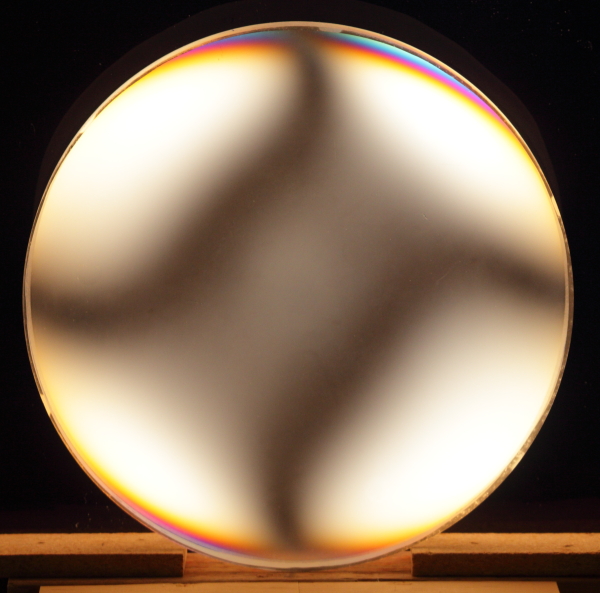
The above image shows the strain test for the blank, showing a lot of
strain near the edges, and quite a bit through the central areas too.
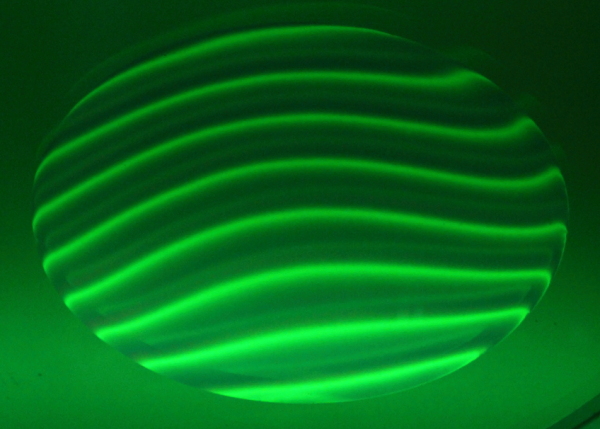
The flat that came with this optical set was clearly not flat, and in
fact shows about 1/2-wave convex. I fixed the flat, then turned
my attention to the primary.
I found the glass very soft, and the primary mirror figure was slowly
changing over time. Therefore I declared it unsuitable for my
work.
The moral of the story is that if you buy a cheap telescope, you are
rolling the dice, and may not get optics that can be improved by
refiguring.
Here's a bit more of an explanation - if there is internal stress in the glass, the mirror might change shape over time.
To anneal glass, it is heated to the annealing temperature (1040 deg F for Pyrex) and then slowly cooled.
During this process, the strain causes the glass to change shape, and this relieves the stress.
So, after annealing, the mirror is no longer a mirror - it must be re-ground, polished, and figured all over again.
Thus, a mirror with severe strain is only worth the raw glass that it
is made from. To keep prices down, one can use cheap,
poorly-annealed or even un-annealed glass and claim it is
annealed. The only way to check is to strip the coating and check
with polarized light, and most people are not going to do this.
Even fewer are going to pay to have the mirror annealed and completely
re-worked.
Now let's say a less-expensive glass, say for example BK7 is used -
this glass has a CTE (coefficient of thermal expansion) that is about
twice as much as Pyrex, so it's going to change shape more while it
cools. It is also softer, and more prone to become rough during
aggressive polishing and figuring.
For telescope mirrors the "you get what you pay for" rule certainly applies.
The client decided on a replacement mirror, a 13" f/4.6, 1.1" thick, Pyrex mirror (made from a blank with excellent anneal).
If you don't want your optical quality to be determined by the roll of
some Asian dice, I have some 13" f/5 blanks, 14.5" f/4 blanks, and 16"
blanks (and larger, of course). I'd be happy to make you a
high-quality primary mirror for your telescope structure from any of
these.
For other sizes or custom focal ratios in mirrors under 16", Carl
Zambuto would be happy to make you a high-quality primary mirror, and
to coat it himself. Congratulations on getting your coater
running superbly, Carl.
Please check back for future installments of "In
the Shop".
Mike
Lockwood
Lockwood Custom Optics
